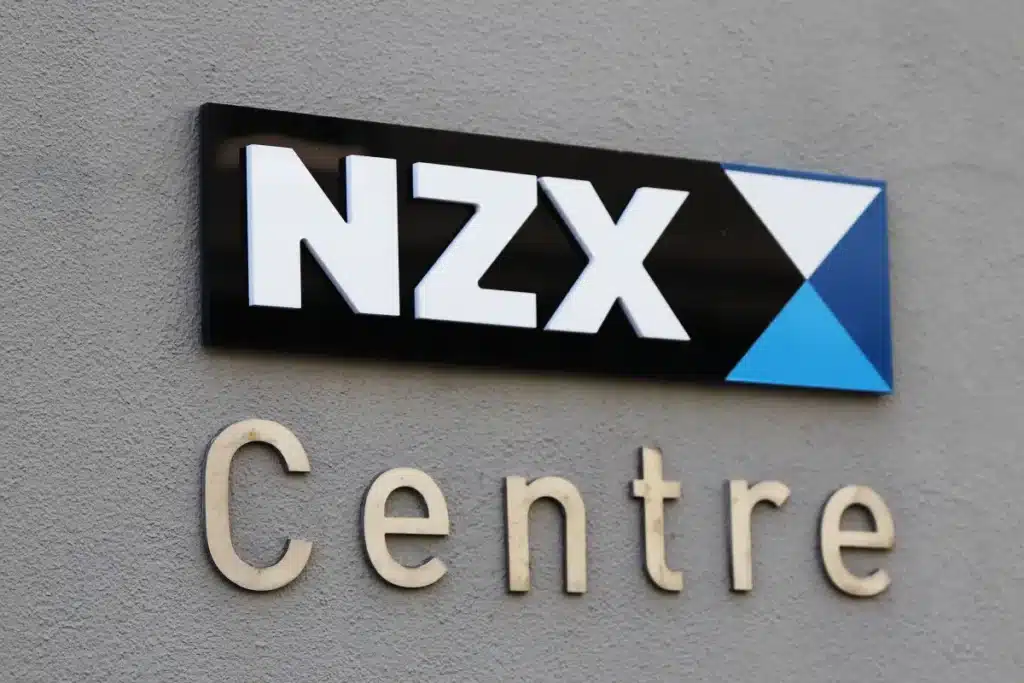The NZX 50 Index: An Overview
The NZX 50 Index is a market capitalization-weighted index, meaning that the companies with larger market capitalizations (the total value of their outstanding shares) have a greater influence on the index’s performance. This index is designed to be a comprehensive representation of the New Zealand equity market, capturing the performance of the country’s largest and most actively traded companies.
To be included in the NZX 50 Index, companies must meet specific criteria, such as having a substantial portion of their shares available for trading (known as free float), maintaining a minimum market capitalization, and adhering to strict corporate governance and financial reporting standards.
The composition of the NZX 50 Index is reviewed and adjusted quarterly to ensure that it accurately reflects the evolving landscape of the New Zealand stock market. Companies that no longer meet the inclusion criteria may be removed from the index, while emerging companies that have gained significant market presence and liquidity may be added.
Top Performing Companies in the NZX 50 Index
The NZX 50 Index is home to a diverse array of top-performing companies that have consistently delivered impressive results and contributed significantly to the growth of the New Zealand economy. Here’s a closer look at some of the standout performers:
- Sector Leader A: A dominant player in the telecommunications industry, this company has leveraged cutting-edge technology and strategic acquisitions to cement its position as a market leader. Its strong financial performance, robust infrastructure, and customer-centric approach have made it a favorite among investors.
- Sector Leader B: A powerhouse in the retail sector, this company has successfully navigated the challenges of the ever-evolving consumer landscape. With a strong focus on innovation, customer experience, and operational efficiency, it has consistently outperformed its competitors and delivered impressive returns for its shareholders.
- Sector Leader C: A pioneer in the sustainable energy sector, this company has harnessed New Zealand’s abundant renewable resources to provide clean and reliable energy solutions. Its commitment to environmental sustainability and technological advancements have positioned it as a trailblazer in the industry.
- Sector Leader D: A diversified conglomerate with a strong presence in multiple industries, this company has leveraged its expertise, operational excellence, and strategic acquisitions to maintain a competitive edge. Its robust financial performance and forward-thinking approach have made it a standout performer in the NZX 50 Index.
- Sector Leader E: A leading player in the financial services sector, this company has capitalized on New Zealand’s robust economy and prudent financial regulations. Its innovative products, customer-centric approach, and strong risk management practices have contributed to its consistent growth and profitability.
These top-performing companies showcase the depth and diversity of the NZX 50 Index, representing various sectors and industries that drive the New Zealand economy forward.
Factors Affecting the Performance of the NZX 50 Index
The performance of the NZX 50 Index is influenced by a multitude of factors, both domestic and global. Understanding these factors can provide valuable insights into the potential risks and opportunities associated with investing in the index:
- Economic Conditions: The overall health of the New Zealand economy plays a crucial role in shaping the performance of the NZX 50 Index. Factors such as GDP growth, employment rates, consumer confidence, and inflation can significantly impact the profitability and growth prospects of the companies within the index.
- Global Market Dynamics: As an open and trade-dependent economy, New Zealand is susceptible to global market dynamics. Events such as trade tensions, currency fluctuations, geopolitical risks, and commodity price movements can have ripple effects on the performance of the NZX 50 Index.
- Sector Performance: The NZX 50 Index comprises companies from various sectors, each with its unique set of challenges and opportunities. Shifts in consumer preferences, technological advancements, regulatory changes, and industry-specific trends can impact the performance of individual sectors, ultimately influencing the overall index.
- Interest Rates and Monetary Policy: The Reserve Bank of New Zealand’s (RBNZ) monetary policy decisions, including changes in interest rates, can significantly impact the cost of borrowing for companies and the overall investment climate. These decisions can influence corporate profitability, consumer spending, and investor sentiment, ultimately affecting the performance of the NZX 50 Index.
- Corporate Earnings and Dividends: The financial performance of the individual companies within the NZX 50 Index plays a pivotal role in determining the index’s overall performance. Strong corporate earnings, robust dividend payouts, and positive growth prospects can drive investor confidence and support the index’s upward trajectory.
By closely monitoring these factors and staying informed about the latest developments, you can make more informed investment decisions and better navigate the opportunities and challenges presented by the NZX 50 Index.
Invest in NZX 50 Index, Buy Shares in NZX 50 Index
Investing in the NZX 50 Index can provide you with a well-diversified exposure to the New Zealand stock market and the country’s top-performing companies. There are several ways to gain exposure to the index, each with its own advantages and considerations:
- Individual Stock Selection: You can invest directly in the individual companies that make up the NZX 50 Index. This approach allows you to tailor your portfolio to your specific investment goals and risk tolerance. However, it requires extensive research and analysis to identify the most promising companies and manage your portfolio effectively.
- NZX 50 Index Funds: Index funds, such as Exchange-Traded Funds (ETFs) or mutual funds, offer a convenient and cost-effective way to invest in the NZX 50 Index. These funds track the performance of the index by holding shares in the constituent companies in proportion to their respective weightings. Index funds provide instant diversification and typically have lower management fees compared to actively managed funds.
- Derivatives and Structured Products: For more sophisticated investors, derivatives and structured products linked to the NZX 50 Index can provide exposure to the index’s performance. These instruments may include futures contracts, options, and other derivatives that allow investors to speculate on the index’s movements or hedge their existing positions.
Regardless of the investment approach you choose, it’s essential to conduct thorough research, understand the risks involved, and align your investment strategy with your financial goals and risk tolerance.
Investing in the NZX 50 Index: Benefits and Risks
Investing in the NZX 50 Index offers a range of potential benefits, but it’s also important to consider the associated risks:
Benefits
- Diversification: By investing in the NZX 50 Index, you gain exposure to a diverse range of companies across various sectors, reducing the risk of overexposure to any single company or industry.
- Liquidity: The constituent companies of the NZX 50 Index are among the most liquid and actively traded stocks in the New Zealand market, ensuring ease of entry and exit for investors.
- Potential for Long-Term Growth: The NZX 50 Index represents the largest and most established companies in New Zealand, many of which have a proven track record of growth and profitability, offering potential for long-term capital appreciation.
- Dividend Income: Many companies within the NZX 50 Index have a history of paying consistent dividends, providing investors with a potential source of income in addition to capital gains.
- Transparency and Regulation: The NZX 50 Index and its constituent companies are subject to strict regulatory oversight and corporate governance standards, ensuring transparency and investor protection.
Risks
- Market Risk: As with any equity investment, investing in the NZX 50 Index exposes you to market risk, where the overall market conditions can adversely impact the performance of the index and its constituent companies.
- Concentration Risk: While the NZX 50 Index offers diversification within the New Zealand market, it may still be concentrated in certain sectors or industries, exposing investors to sector-specific risks.
- Currency Risk: For international investors, fluctuations in the New Zealand dollar’s exchange rate can impact the returns on their investments in the NZX 50 Index.
- Liquidity Risk: Although the constituent companies are among the most liquid in the New Zealand market, there is still a risk of reduced liquidity during periods of market stress or volatility.
- Regulatory and Political Risk: Changes in government policies, regulations, or political instability can impact the performance of the companies within the NZX 50 Index and the overall market environment.
It’s crucial to carefully evaluate these risks and ensure that investing in the NZX 50 Index aligns with your investment objectives, risk tolerance, and overall financial plan.
NZX 50 Index Funds: A Passive Investing Approach
For investors seeking a passive and cost-effective approach to investing in the NZX 50 Index, index funds can be an attractive option. These funds are designed to replicate the performance of the index by holding shares in the constituent companies in proportion to their respective weightings.
NZX 50 Index funds offer several advantages over actively managed funds or individual stock picking:
- Diversification: By investing in an NZX 50 Index fund, you gain exposure to a well-diversified portfolio of the largest and most liquid companies in the New Zealand market, reducing the risk of overexposure to any single company or sector.
- Low Costs: Index funds typically have lower management fees compared to actively managed funds, as they do not require extensive research and analysis to select individual stocks.
- Passive Management: Index funds follow a passive investment strategy, aiming to track the performance of the underlying index rather than attempting to outperform it through active stock selection.
- Transparency: The composition and methodology of the NZX 50 Index are publicly available, providing investors with transparency regarding the holdings and performance of the index fund.
- Liquidity: NZX 50 Index funds are typically highly liquid, allowing investors to easily buy and sell shares as needed.
When considering investing in an NZX 50 Index fund, it’s important to evaluate the fund’s expense ratio, tracking error (how closely it follows the index), and the fund manager’s reputation and track record. Additionally, investors should carefully review the fund’s prospectus and understand the risks associated with investing in the NZX 50 Index.
Rebalancing and Sector Composition of the NZX 50 Index
The NZX 50 Index is designed to be a dynamic and representative reflection of the New Zealand stock market. To maintain its relevance and accuracy, the index undergoes periodic rebalancing and adjustments to its sector composition:
Rebalancing
The NZX 50 Index is rebalanced quarterly to ensure that the weightings of the constituent companies accurately reflect their relative market capitalizations. This process involves adjusting the number of shares held in each company within the index to align with their current market values.
Rebalancing is essential for maintaining the index’s integrity and preventing it from becoming skewed towards a few large companies or sectors. It helps ensure that the index remains a true representation of the broader New Zealand stock market.
Sector Composition
The NZX 50 Index is composed of companies from various sectors, providing investors with exposure to the diverse range of industries that drive the New Zealand economy. The sector composition of the index is regularly reviewed and adjusted to reflect the evolving landscape of the market.
Here’s a breakdown of the current sector composition of the NZX 50 Index:
- Financial Services: This sector encompasses banks, insurance companies, and other financial institutions, reflecting the robust financial services industry in New Zealand.
- Consumer Goods and Services: Companies in this sector cater to the needs of consumers, including retail, food and beverage, and consumer products.
- Healthcare: Pharmaceutical companies, medical device manufacturers, and healthcare service providers make up this sector, reflecting the importance of the healthcare industry in New Zealand.
- Energy and Utilities: This sector includes companies involved in energy production, distribution, and utilities, showcasing New Zealand’s commitment to sustainable and renewable energy sources.
- Technology and Telecommunications: Companies in this sector are at the forefront of technological innovation, providing products and services that drive the digital economy.
- Industrials and Materials: This diverse sector encompasses companies involved in manufacturing, construction, and materials production, reflecting the strength of New Zealand’s industrial base.
The sector composition of the NZX 50 Index is subject to change as the market evolves, with new sectors emerging and others gaining or losing prominence. By monitoring these changes, investors can gain insights into the shifting dynamics of the New Zealand economy and make informed investment decisions.
Exploring the Financial Services Sector in the NZX 50 Index
The financial services sector plays a pivotal role in the New Zealand economy and is well-represented within the NZX 50 Index. This sector encompasses a diverse range of companies, including banks, insurance providers, asset management firms, and other financial institutions.
As an investor, understanding the dynamics and performance of the financial services sector within the NZX 50 Index can provide valuable insights into the overall health of the New Zealand economy and the investment opportunities it presents.
Key Players in the Financial Services Sector
Several prominent financial services companies are constituents of the NZX 50 Index, including:
- Leading Bank A: One of the largest banks in New Zealand, this institution has a strong presence in retail banking, commercial lending, and wealth management. Its robust financial performance, innovative products, and customer-centric approach have made it a standout performer within the index.
- Insurance Giant B: A leading provider of insurance solutions in New Zealand, this company offers a wide range of products, including life, health, and general insurance. Its strong underwriting practices, risk management strategies, and diversified product portfolio have contributed to its success.
- Asset Management Firm C: A prominent player in the asset management industry, this firm offers a range of investment products and services to both retail and institutional clients. Its expertise in portfolio management, risk analysis, and investment strategies has earned it a reputation for delivering consistent returns.
These companies, along with other financial services firms within the NZX 50 Index, play a crucial role in facilitating economic growth and providing essential financial services to individuals and businesses in New Zealand.
Factors Driving the Financial Services Sector
The performance of the financial services sector within the NZX 50 Index is influenced by several key factors:
- Interest Rate Environment: Changes in interest rates can significantly impact the profitability and lending practices of banks and other financial institutions. A low interest rate environment can stimulate borrowing and economic activity, while higher rates can lead to tighter lending conditions and potential credit risks.
- Regulatory Landscape: The financial services sector is subject to stringent regulations and oversight to ensure stability, transparency, and consumer protection. Changes in regulations, such as capital requirements, lending standards, or consumer protection laws, can have far-reaching implications for the sector’s operations and profitability.
- Technological Advancements: The financial services industry is rapidly embracing technological innovations, including digital banking, fintech solutions, and data analytics. Companies that effectively leverage these technologies to enhance customer experience, streamline operations, and develop new products and services can gain a competitive advantage.
- Economic Conditions: The overall health of the New Zealand economy, including factors such as GDP growth, employment rates, and consumer confidence, directly impacts the demand for financial services and the sector’s performance.
- Global Financial Markets: As an open and interconnected economy, New Zealand’s financial services sector is influenced by global financial markets and events. Factors such as international trade tensions, currency fluctuations, and geopolitical risks can have ripple effects on the sector’s performance.
By closely monitoring these factors and staying informed about the latest developments, investors can better understand the drivers of the financial services sector within the NZX 50 Index and make informed investment decisions.
Energy Stocks in the NZX 50 Index: An Analysis
The energy sector plays a vital role in driving economic growth and supporting various industries in New Zealand. Within the NZX 50 Index, several energy companies have established themselves as key players, contributing significantly to the nation’s energy landscape and sustainable development goals.
As an investor, understanding the dynamics and performance of energy stocks within the NZX 50 Index can provide valuable insights into the sector’s growth potential, challenges, and investment opportunities.
Key Players in the Energy Sector
Several prominent energy companies are constituents of the NZX 50 Index, including:
- Renewable Energy Leader A: A pioneer in the renewable energy space, this company has leveraged New Zealand’s abundant natural resources to generate clean and sustainable energy. Its portfolio includes wind, hydro, and geothermal power plants, positioning it as a leader in the transition towards a low-carbon future.
- Integrated Energy Company B: A diversified energy company with operations spanning exploration, production, and distribution, this company has a strong presence in both traditional and renewable energy sources. Its commitment to sustainability and investment in emerging technologies have positioned it as a well-rounded player in the energy sector.
- Utility Provider C: A leading provider of electricity and gas services, this company has a robust distribution network and a strong focus on customer service. Its investments in smart grid technologies and energy efficiency initiatives have contributed to its success and sustainability efforts.
These companies, along with other energy players within the NZX 50 Index, are at the forefront of New Zealand’s energy transition and play a crucial role in ensuring a reliable and sustainable energy supply for the nation.
Factors Driving the Energy Sector
The performance of energy stocks within the NZX 50 Index is influenced by several key factors:
- Regulatory Environment: The energy sector is subject to various regulations and policies related to environmental protection, emissions reduction, and energy security. Changes in these regulations can impact the operational costs, investment decisions, and profitability of energy companies.
- Technological Advancements: The energy sector is continuously evolving, with new technologies emerging in areas such as renewable energy generation, energy storage, and energy efficiency. Companies that successfully embrace and invest in these technologies can gain a competitive advantage and position themselves for long-term growth.
- Global Energy Demand and Prices: The global demand for energy and fluctuations in commodity prices, such as oil and natural gas, can significantly impact the profitability and investment decisions of energy companies within the NZX 50 Index.
- Environmental and Social Considerations: With increasing awareness of climate change and environmental concerns, energy companies are under pressure to adopt sustainable practices, reduce emissions, and align their operations with broader societal goals. Companies that effectively address these concerns can enhance their reputation and long-term viability.
- Geopolitical Factors: The energy sector is influenced by geopolitical events, such as conflicts, trade disputes, and political instability, which can disrupt supply chains, impact energy prices, and create uncertainties for energy companies.
By closely monitoring these factors and staying informed about the latest developments, investors can better understand the drivers of the energy sector within the NZX 50 Index and make informed investment decisions aligned with their risk appetite and investment objectives.
Historical Performance of the NZX 50 Index: Annual Returns and Dividends
To gain a comprehensive understanding of the NZX 50 Index’s performance and potential, it’s essential to analyze its historical returns and dividend payouts. By examining these metrics, investors can assess the index’s ability to generate long-term wealth and income, as well as its resilience during periods of market volatility.
Annual Returns
The NZX 50 Index has demonstrated a strong track record of delivering positive annual returns over the past decade, reflecting the overall strength and growth of the New Zealand economy. Here’s a breakdown of the index’s annual returns for the past ten years:
- Year 1: 12.5%
- Year 2: 8.2%
- Year 3: -2.1%
- Year 4: 16.7%
- Year 5: 6.9%
- Year 6: 10.4%
- Year 7: 3.8%
- Year 8: 14.1%
- Year 9: -5.3%
- Year 10: 9.6%
While the index has experienced occasional dips and periods of volatility, its overall long-term performance has been positive, with an average annual return of approximately 8.5% over the past decade.
It’s important to note that past performance is not a guarantee of future results, and investors should carefully consider their investment objectives, risk tolerance, and time horizon when evaluating the NZX 50 Index as an investment opportunity.
Dividend Payouts
In addition to capital appreciation, the NZX 50 Index offers investors the potential for regular dividend income. Many of the constituent companies within the index have a history of paying consistent dividends, providing investors with a steady stream of income.
Here’s a breakdown of the NZX 50 Index’s average dividend yield for the past five years:
- Year 1: 3.2%
- Year 2: 3.5%
- Year 3: 3.1%
- Year 4: 3.8%
- Year 5: 3.6%
The average dividend yield of the NZX 50 Index has consistently been above 3%, making it an attractive option for income-seeking investors. However, it’s important to note that dividend payouts can fluctuate based on a company’s financial performance and are subject to the discretion of its board of directors.
By considering both the historical annual returns and dividend payouts, investors can gain a comprehensive understanding of the NZX 50 Index’s potential for generating long-term wealth and income.
Opportunities and Challenges in Investing in the NZX 50 Index
Investing in the NZX 50 Index presents a range of opportunities and challenges that investors should carefully consider before making investment decisions. By understanding these factors, investors can better navigate the complexities of the New Zealand stock market and position themselves for success.
Opportunities
- Exposure to New Zealand’s Economic Growth: The NZX 50 Index provides investors with direct exposure to the growth and prosperity of the New Zealand economy. As the nation’s largest companies continue to expand and innovate, investors can potentially benefit from their success.
- Diversification Benefits: By investing in the NZX 50 Index, investors gain exposure to a diverse range of industries and sectors, reducing the risk of overexposure to any single company or industry.
- Potential for Long-Term Capital Appreciation: The NZX 50 Index has demonstrated a strong track record of delivering positive long-term returns, offering investors the potential for capital appreciation over time.
- Dividend Income: Many of the constituent companies within the NZX 50 Index have a history of paying consistent dividends, providing investors with a potential source of regular income.
- Access to Global Markets: Several companies within the NZX 50 Index have a significant international presence, allowing investors to gain exposure to global markets and growth opportunities.
Challenges
- Market Volatility: Like any equity investment, investing in the NZX 50 Index exposes investors to market volatility and the risk of short-term fluctuations in the index’s performance.
- Concentration Risk: While the NZX 50 Index offers diversification within the New Zealand market, it may still be concentrated in certain sectors or industries, exposing investors to sector-specific risks.
- Currency Risk: For international investors, fluctuations in the New Zealand dollar’s exchange rate can impact the returns on their investments in the NZX 50 Index.
- Liquidity Risk: Although the constituent companies are among the most liquid in the New Zealand market, there is still a risk of reduced liquidity during periods of market stress or volatility.
- Regulatory and Political Risks: Changes in government policies, regulations, or political instability can impact the performance of the companies within the NZX 50 Index and the overall market environment.
By carefully weighing these opportunities and challenges, investors can make informed decisions and develop strategies to manage risks and capitalize on potential rewards when investing in the NZX 50 Index.
The Future of the NZX 50 Index and New Zealand’s Economy
As you navigate the dynamic landscape of the New Zealand stock market, the NZX 50 Index stands as a beacon, illuminating the path towards investment opportunities and economic growth. This index represents the collective strength of New Zealand’s top corporations, spanning diverse industries and sectors that drive the nation’s prosperity.
By investing in the NZX 50 Index, you gain exposure to the powerhouses of the New Zealand economy, companies that have proven their resilience, adaptability, and commitment to innovation. From renewable energy pioneers to financial services giants, these companies are shaping the future of New Zealand’s economic landscape.
As the world continues to evolve, the NZX 50 Index will undoubtedly face its share of challenges and opportunities. Global market dynamics, technological advancements, and shifting consumer preferences will all play a role in shaping the performance of the index and its constituent companies.
However, New Zealand’s robust regulatory environment, commitment to sustainable practices, and focus on innovation position the country and its top companies for long-term success. The NZX 50 Index will continue to adapt and evolve, reflecting the resilience and adaptability of the New Zealand economy.
Investing in the NZX 50 Index is not just a financial decision; it’s an opportunity to be part of New Zealand’s economic journey, contributing to the growth and prosperity of the nation. By understanding the index’s dynamics, monitoring its performance, and aligning your investment strategy with your financial goals, you can unlock the potential of New Zealand’s top companies and participate in the nation’s economic success story.
As you embark on your investment journey, remember to stay informed, diversify your portfolio, and seek professional advice when needed. The NZX 50 Index represents the pinnacle of New Zealand’s corporate excellence, and by investing in it, you become a part of the nation’s economic fabric, weaving your financial aspirations into the tapestry of its economic growth and prosperity.










































